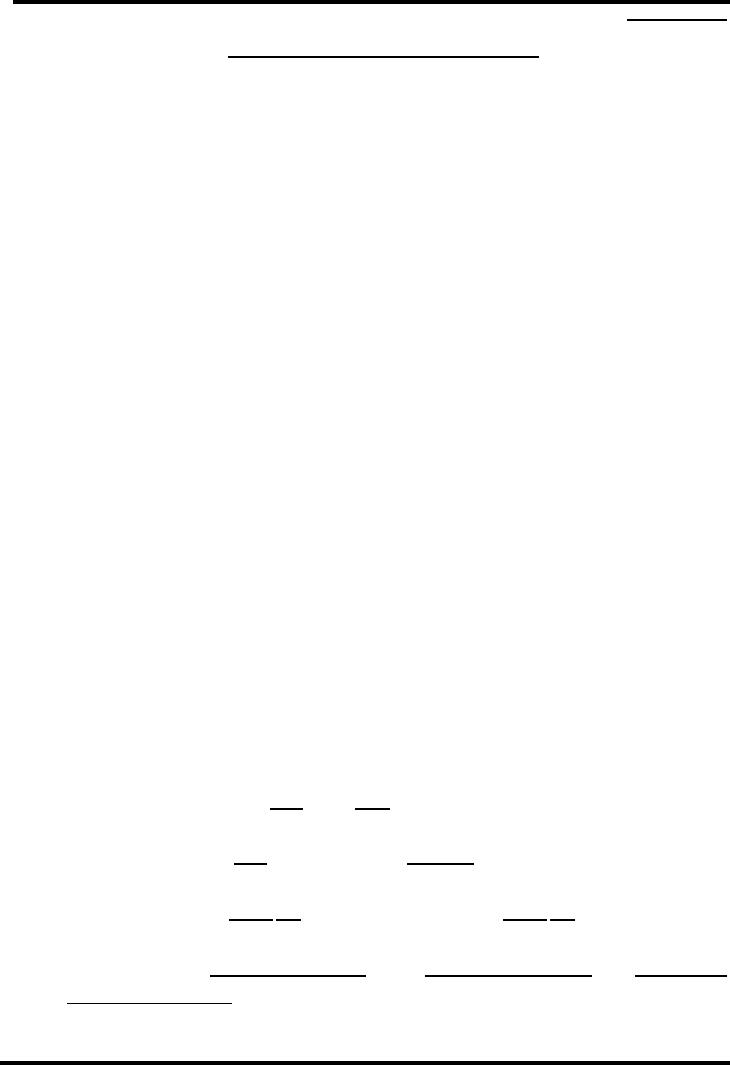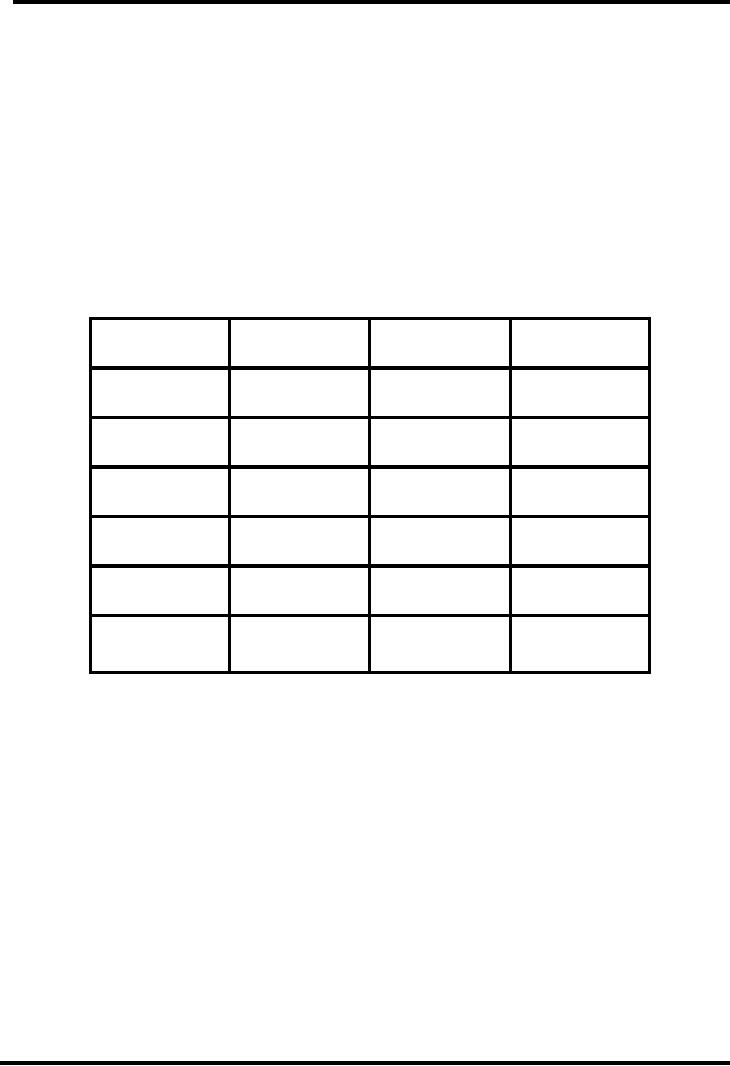 |
STYLE: GUIDELINE AND PITFALLS II:AMBIGUITY, REDUNDANCY, EUPHEMISM: |
| << STYLE: GUIDELINE AND PITFALLS I:COLLOQUIAL VS FORMAL, CIRCUMLOCUTION |
| PARAGRAPH WRITING: TYPES AND TECHNIQUES:STRUCTURE >> |

Journalistic
Writing MCM310
VU
LECTURE
19
STYLE:
GUIDELINE AND PITFALLS II
AMBIGUITY:
Ambiguity
(ambiguity can be syntactical or
semantically)
You
write to make life easier
for your readers," Rob continued.
"Ambiguity makes life harder. It
causes
hesitation,
doubt, and frustration. It
slows down the read."
Ambiguity
in writing can be either intentional or
unintentional. Intentional ambiguity may
be used to mislead a
reader
or might be necessary due to the
context or subject matter. Unintentional
ambiguity should always be
avoided
and can be with care
and practice.
Three
types of ambiguity exist. Understanding the
differences between these
types will help you
identify
ambiguity
in what others write and to
avoid including unintentional ambiguity
in your own writing.
In
the following examples, identify the
ambiguity and decide how the
claims can be re-written to
get rid of the
ambiguity.
1.
Marry
said to her sister that the
fault was hers. (not
clear whose fault)
2.
When
she put the pitcher on the
glass-topped table it broke. (not
clear what broke)
3.
Before: The
Minister of Agriculture requires
eggs to be stamped with the
date when they are laid
by
the
farmer.
After:
The
Minister of Agriculture requires
eggs to be stamped by the farmers
with the date when they
are
laid.
4.
Before: This
morning I shot an elephant in my
pajamas.
After:
This
morning, in my pajamas, I shot an
elephant.
5.
Before: Our
mothers bore us.
After:
Our
mothers gave birth to
us
6.
Before: Americans
are willing to drop nuclear
weapons.
After:
The
American people are willing to utilize
nuclear weapons.
REDUNDANCY
1.
The
shop assistant restored the umbrella
back to its owner.
2.
She
was often in the habit of going to the
cinema.
3.
Before:
John
has been quite ill
for a really long
time.
After:
John
has been ill for a
long time.
4.
Before:
Suzy
is a good teacher who makes
a significant impact on her students
and faculty.
After:
Suzy
is a talented teacher who makes an
impact on her students and
faculty.
5.
Before:
Michael
Jordan was the best
basketball player ever. Jordan
was slam dunk
master.
After:
Basketball
star Michael Jordan was the
best basketball player ever
and slam dunk
master.
6.
Before:
John
found the job to be easy,
and Jen also thought it
was simple. Mike completed
the
job
without difficulty
too.
After:
John,
Jen, and Mike found the
job to be easy.
61

Journalistic
Writing MCM310
VU
CLICH�:
Clich�s
are phrases that have
been exhausted to the point
where they have completely lost
originality.
No
shadow of doubt
Needless
to say
Strange
as it may seem
stands
to reason
Last
but not least
In
any shape or form
Leave
no stone unturned
�
Hercules
was as strong
as an ox.
�
I
have to give an arm
and a leg to
find a parking spot during
the holiday season.
�
There
are loads
of websites
on the Internet.
EUPHEMISM:
Euphemism
Meaning
Euphemism
Meaning
correctional
facility
prison
pre-need
burial
arrangements
arrangements
previously
owned
used
cars
laid
to rest
buried
cars
depopulate
kill
pacification
war
revenue
taxes
negative
feedback
scolding
enhancements
employment
Fired
negative
impact
hurt
terminated
non-passing
grade
Failing
grade
GRANDILOQUENCE:
Pompous/colorful/entatious
language.
Before:
The
luxurious ambiance of this exotic
setting, which we chanced
upon during our
desultory
peregrination
south along the Amalfi Coast, is found in
the guests seemed to be on a nuptial
holiday, whether
the
first or the 25th. The place
had a number of luminaries who
were not at all
condescending. Among the
distinguished
guests was a producer with
his entourage, who came in
from their palatial yacht
and dined at the
hotel...
After:
All
the guests at San Pietro
seemed to be on honeymoons, whether
first, second, or 25th. The crowd
primarily
Italian, British, German, and American
was sophisticated and
decidedly un-snobbish. There were
even
a few celebrities on view. A famous
producer, his wife and friends
stopped by for dinner while
their
chartered
yacht lay anchored in the
harbor. Two well-know actors
arrived the day we left. Another
star was
there
but, for some reasons,
stayed in her room most of
the time. Nobody asked for
autographs-probably too
busy
having their own good
time.
(Pamela
Fiori / Travel and
Leisure.)
62

Journalistic
Writing MCM310
VU
EXCRESCENCE:
bankrupt
and awkward words)
We
have received your order
for two lawnmowers, and
will send same by
rail.
Vs.
We
have received your order
for two lawnmowers and
will send them by rail
tomorrow.
We
are instituting many meaningful
changes in the curriculum.
Vs.
We
are changing the curriculum in many
significant ways.
INSEPARABLES:
chop
and change
hook
and crook
betwixt
and
tween
shape
or form
yes
and means
each
and every
SLANG:
Saw
a pretty corny movie last
night. Mary major had a part
in it. A tear jerker
though
Somebody
pinched my brolly when it was
falling in bucket.
VERBIAGE:
�
Give
us a fiver. Here you are.
Smashing. Ta.
�
Before: Should the supply
of stickers not be sufficient to
meet section requirements,
application
should
be made to this office for a supply of
additional copies.
�
After:
if you
need more stickers, ask
for them.
THE
SUFFIX-WISE:
Taxwise
Moneywise
Pricwise
Roadwise
Businesswise
Newswise
Disciplinewise
Careerwse
Weatherwise
Salarywise
63
Table of Contents:
- INTRODUCTION TO JOURNALISTIC WRITING:Practical, THINGS TO KNOW
- QUALITIES OF GOOD WRITERS
- QUALITIES OF GOOD WRITERS
- QUALITIES OF GOOD WRITING:Achieve appropriate readability:
- QUALITIES OF GOOD WRITING:Be concise, Be creative, Be correct
- THE PROCESS OF WRITING:INVENTION, WHEN YOU START TO WRITE
- THE PROCESS OF WRITING II:ORGANIZING, DRAFTING, REVISING
- ALL ABOUT WORDS:HOW WORDS ARE FORMED?:SUFFIXES
- DICTIONARY-A WRITER’S LANGUAGE TOOL:KINDS OF INFORMATION
- PARTS OF SPEECH:Noun Gender, Noun Plurals, Countable Nouns
- BASIC CLAUSE PATTERNS
- ACTIVE AND PASSSIVE VOICE
- MODIFIERS AND SENTENCE TYPES:COMPOUND SENTENCES
- REPORTED SPEECH:Indirect Questions, Direct commands
- GRAMMATICAL SENTENCE – ISSUES:SUBJECT-VERB AGREEMENT
- GRAMMATICAL SENTENCE – ISSUES II:SENTENCE FRAGMENTS
- EFFECTIVE SENTENCE:PARALLELISM, NEEDED WORDS, SHIFTS
- STYLE: GUIDELINE AND PITFALLS I:COLLOQUIAL VS FORMAL, CIRCUMLOCUTION
- STYLE: GUIDELINE AND PITFALLS II:AMBIGUITY, REDUNDANCY, EUPHEMISM:
- PARAGRAPH WRITING: TYPES AND TECHNIQUES:STRUCTURE
- PARAGRAPH WRITING: TYPES AND TECHNIQUES:Putting on Our Play
- ESSAY WRITING:VARIOUS STRATEGIES FOR ESSAYS, PROMPTS
- SIGNAL WORDS:Non word Emphasis Signals
- EXPOSITORY WRITING:LOGICAL FALLACIES, APPEAL TO EMOTION
- THE WRITING STYLES: REPORT and NARRATIVE WRITING, SHORT REPORTS
- THE WRITING STYLES: DESCRIPTIVE AND PERSUASIVE WRITINGS, Observation
- RESEARCH WRITING AND DOCUMNETING SOURCES:Handling Long Quotations
- Summary and Précis Writing:CHARACTERISTICS OF GOOD SUMMARY
- Punctuation:THE PERIOD, THE COMMA, THE SEMICOLON, THE COLON
- MECHANICS:ABBREVIATIONS, NUMBERS, SPELLING, THE HYPHEN
- READING SKILLS FOR WRITERS:EDUCATED READING, STEPS
- PARTS OF A NEWSPAPER:Box-out, By-line, Caption, Exclusive, Feature
- THE LANGUAGE OF THE NEWSPAPERS II:BROADSHEET NEWSPAPER
- News Writing and Style I:WHAT TO LOOK FOR IN A NEWSPAPER
- NEWS WRITING II:Accuracy, Clarity, Style, Qualities of Effective Leads
- EDITORIAL WRITING:WRITING AN EDITORIAL:STRUCTURING AN EDITORIAL
- WRITING FEATURES:GENERATING FEATURE STORY IDEAS
- WRITING COLUMNS:Column and a news report, Purpose, Audience
- WRITING ARTICLES FOR NEWSPAPERS:The Heading, The Lead
- WRITING ANALYSIS:purpose, scope, method, results, recommendations
- LETTERS TO EDITORS:Four important aspects about letters, Organizing letters
- BROADCAST AND WEB NEWS WRITING:WRITE CONCISELY, BROADCAST STYLE
- WRITING PRESS RELEASE, REVIEWS AND OBITUARIES:Summary of Content:
- THE ART OF INTERVIEWINGS
- FINAL THOUGHTS:Practical, Job-Related, Social, Stimulating, Therapeutic